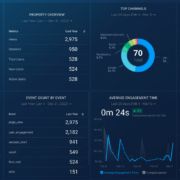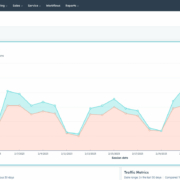Gaining the Edge: How to Do a Social Media Competitive Analysis
Social media strategy has become a crucial component of every company’s marketing strategy in the current digital era. It’s essential to have a thorough awareness of what your rivals are doing on social media if you want to stay one step ahead of the game and surpass them.
To make your social media strategy as effective as possible, you need to do a competitive analysis. You can learn important lessons from looking at the social media profiles of your rivals to improve your own strategy and guarantee success. Let us walk you through how to do a thorough social media competitor analysis.
Step 1: Identify Your Competitors
The first step is to list the major rivals in your specialty or sector. Search for companies that have a comparable target market or that provide comparable goods or services. Pay attention to your direct competitors who are actively using social media sites.
You can find out who your main rivals are using tools like BuzzSumo, SEMrush, or even just a straightforward Google search. This is the first step in figuring out how to establish your share of voice among your top competitors.
Step 2: Choose the Right Social Media Platforms
After you have a list of your competitors, find out which social networks they use. Your analysis must be concentrated on the platforms where your target audience is most active.
Popular networks, including Facebook, Instagram, Twitter, LinkedIn, YouTube, and Pinterest, are among those to take into account. Rank the platforms according to the characteristics of your target audience as opposed to just your competitors’ audience.
Step 3: Assess Their Social Media Profiles
Analyze the social media accounts of your competitors in detail. Pay close attention to profile details, bios, cover photographs, and overall branding consistency. Take note of the messaging, language use, and tone with which they address their audience.
Check for the value propositions and distinguishing characteristics they emphasize. Viewing your competitors’ social media profiles as a collective can act as somewhat of a template for setting up your own profiles and pages.
Step 4: Evaluate Content Strategy
Analyze the type of content your competitors are sharing on social media. Look for patterns, themes, and formats they use. Pay attention to the frequency of posting, engagement levels, and level of interaction they have with their audience. Identify the most popular and engaging content pieces and determine the tactics they employ to elicit responses from their followers.
Step 5: Monitor Engagement Metrics
Engagement metrics offer useful information about the efficacy of your competitors’ social media initiatives. Take into account measures like following growth overall, likes, comments, shares, and retweets. Find the kind of content that receives the most interaction and try to identify KPIs for why it is so effective. Analyze how your rivals connect with their followers and respond to comments.
Step 6: Analyze Hashtags and Keywords
Look at the hashtags and keywords that your rivals are using in their social media postings. Find the ones that promote interaction and are pertinent to your industry. You can find trending hashtags with the help of programs like RiteTag and Hashtagify.
There are also a number of analytics tools if you’re looking to get even more in-depth with your social media performance. Social media analytics tools can give you incredible details about your current social media metrics, such as engagement rate, audience growth, demographics, number of followers, and much more.
Many of these tools can even consolidate custom social media reports that can be easily digested and are primed for enhancing your social media strategy. Use this knowledge to enhance your own hashtag strategy and raise exposure among your target market.
Step 7: Study Influencer Collaborations
A potent instrument for social media marketing initiatives is influencer marketing. Search for influencer partnerships that your rivals have established. Determine the influencers they collaborate with and evaluate the effect on their social media presence. Take note of the content’s genre and the level of interaction it inspires.
To expand the reach of your own brand, think about looking into similar partnerships. Do you think you need to try influencer marketing out for yourself, or are you still not sure exactly what it is or how it works? We wrote a blog about it!
Step 8: Track Advertising Efforts
To reach a larger audience, many firms invest in social media advertising. In your competitive analysis, keep an eye on the advertising and marketing campaigns of your rivals across different media.
Find out what kinds of advertising they run, which platforms they favor, and who their target market is. Examine the ad campaigns’ messaging, graphics, and general effectiveness. If you have the budget, you could even start to gauge pricing for what it would cost for you to run social media ads.
Step 9: Draw Insights and Take Action
You ought to have a good amount of information and understanding about the social media tactics employed by your rivals by this point. Examine the data to find your advantages and disadvantages, as well as potential growth areas. Use the information to improve your own social media marketing strategy, try out novel concepts, and set yourself apart from the competition.
Be sure to also see if you’re in a position to use social media management tools such as Sprout Social or Hootsuite. Once you have a benchmark of where your top competitors are in terms of their social media activity, you can try to stay ahead of social media trends.
Start taking advantage of newer platforms like TikTok and Threads, and start showing up where your competition isn’t. This can also all culminate in a greater presence in search engines, as social media can be beneficial to search engine optimization (SEO).
Gain an Edge on Your Competitors With Social Media Marketing
Each company hoping to succeed in the digital world should conduct a social media competitor analysis. You can learn important lessons, spot best practices, and find ways to set yourself apart by carefully analyzing your competitors’ social media content across social platforms.
Never forget that the goal of the analysis is to use the data to improve and inform your own tactics rather than to mimic what your rivals are doing. Make use of social media analytics to stay ahead of the competition in your field and keep your social media channels on pace with your top competitors.
Let Us Lift Your Social Media Strategy
Want more from Lift Marketing? We’ve got more marketing education and information where this came from! We can teach you how to develop a social media campaign that works for your business. We can also take on the role of social media manager for you and your business. Give us a call, and we can get started on your social media marketing strategy and competitive analysis.













